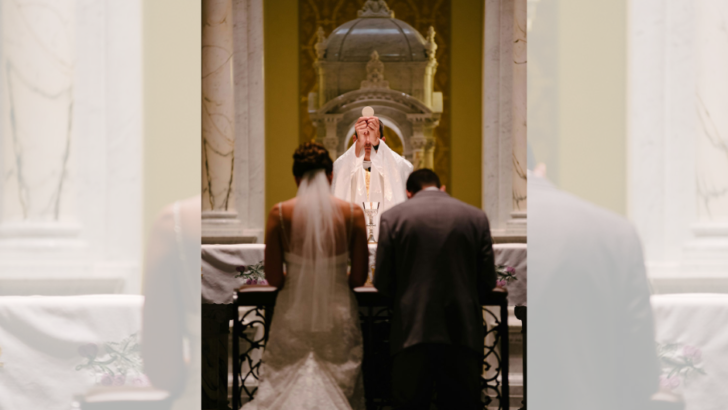Q: A divorced, annulled Catholic friend of mine recently got engaged to another divorced Catholic, who said her previous marriage was ruled “lacks proper form” by the Church. What does this mean? Are they able to marry in the Catholic Church?
A: Even as a canon lawyer, it’s impossible to draw firm conclusions about another person’s canonical marriage situation based on a second-hand account and without knowing all the details. Still, it sounds like the marriage in question was invalid due to what we would technically call a ‘lack of canonical form’.
Catholics, and only Catholics, are bound to observe “canonical form” in marriage as per Canon 1108 of the Code of Canon Law. Essentially, this means that Catholics are required to be married in a Catholic context, saying their wedding vows and exchanging matrimonial consent in the presence of two witnesses and a properly authorised Catholic bishop, priest or deacon.
If a Catholic marries outside of canonical form – for example, if they married in a courthouse or even in a non-Catholic religious ceremony – this is not only illicit (that is, against canon law) but also invalid (meaning that the wedding simply wouldn’t ‘work’).
In some cases, depending on specific pastoral needs, it may be possible for a Catholic to receive a ‘dispensation from canonical form’, or special permission from the bishop, to marry a non-Catholic in a non-Catholic ceremony.
It’s also important to note that if someone becomes Catholic at any point in his or her life, even if they fall away from the Church, he or she is always considered Catholic in canon law. This means that a baptised Catholic who no longer actively practices the faith would still be bound to observe canonical form in their wedding.
So if a Catholic – practicing or not – attempts to marry in a non-Catholic ceremony without a dispensation, this marriage would be invalid in a very objective, clear-cut way. Other causes of marriage nullity, like certain psychological issues or a lack of proper intention, are generally less obvious and more nuanced. This is why a marriage can be declared invalid due to lack of form much more quickly and easily than a typical marriage nullity process.
Presuming there are no other impediments, a Catholic who had his or her marriage declared invalid due to lack of form would indeed be free to marry in the Catholic Church.
Q: May a Catholic lay person perform self-intinction using the consecrated host in the precious blood?
A: No, self-intinction is not permitted for a lay person. Intinction is a well-established, albeit relatively less common, way of receiving holy Communion under both kinds. As paragraph 245 of the General Instruction of the Roman Missal tells us: “The Blood of the Lord may be consumed either by drinking from the chalice directly, or by intinction.”
This same idea is reiterated in the US bishops’ 2002 document ‘Norms for the Distribution and Reception of Holy Communion under Both Kinds in the Dioceses of the United States of America’. However, in paragraph 50, the U.S. bishops’ document explicitly states: “The communicant, including the extraordinary minister, is never allowed to self-communicate, even by means of intinction. Communion under either form, bread or wine, must always be given by an ordinary or extraordinary minister of Holy Communion.” Extraordinary ministers are by definition laypersons, as clergy – meaning ordained bishops, priests, and deacons – are considered ordinary ministers of Holy Communion.
Similarly, in a section describing the norms for Communion under both kinds for the non-ordained lay faithful, the Vatican document “Redemptionis Sacramentum” tells us in paragraph 104: “The communicant must not be permitted to intinct the host himself in the chalice, nor to receive the intincted host in the hand.”
Jenna Marie Cooper, who holds a licentiate in canon law, is a consecrated virgin and a canonist whose column appears weekly at OSV News. Send your questions to CatholicQA@osv.com.



